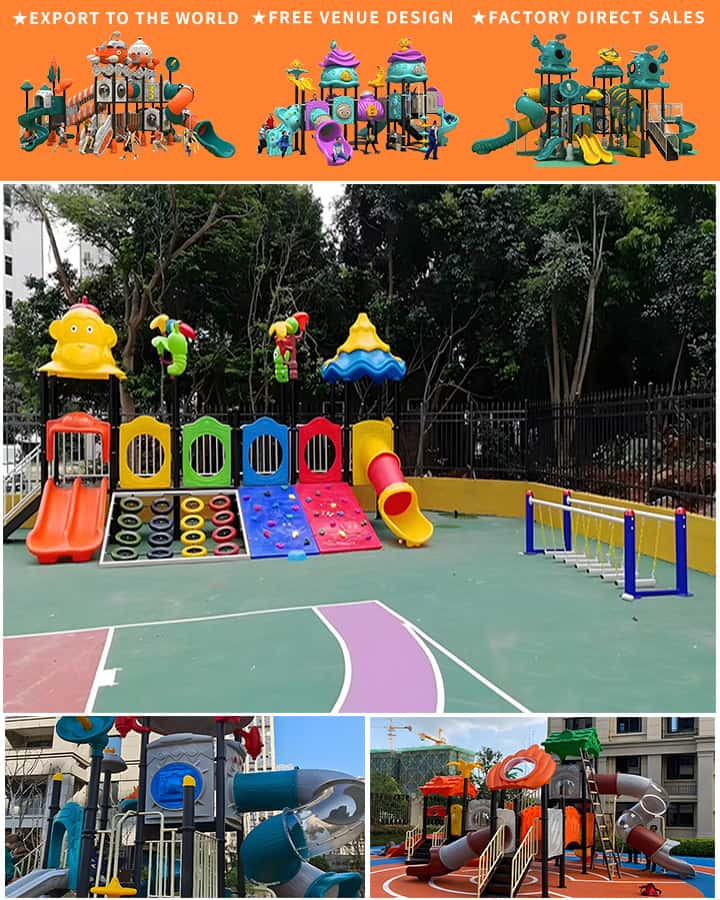In recent years, the design and manufacturing of kids’ playground equipment have undergone a significant transformation, thanks in large part to advancements in technology. One of the most notable innovations in this field is the use of Computer-Aided Design (CAD) blocks. These digital building blocks are revolutionizing the way we create and construct playgrounds, making them safer, more versatile, and more fun for children around the world. In this article, we’ll explore how CAD blocks are being used to reimagine kids’ playground equipment and why this shift is so important.
The Evolution of Playground Equipment
Traditionally, playground equipment has been designed using hand-drawn sketches and physical models. This process was not only time-consuming but also prone to errors and inefficiencies. Enter CAD blocks – a game-changer in the world of playground design. CAD software allows designers to create precise, three-dimensional models of playground structures, which can be easily modified and perfected before any physical construction takes place.
Benefits of Using CAD Blocks
Enhanced Safety: Safety is paramount when it comes to designing playgrounds for children. CAD blocks enable designers to simulate various scenarios and stress tests on equipment designs, ensuring that every piece is up to code and safe for use. By identifying potential hazards early in the design process, CAD helps prevent accidents and injuries.
Customization and Versatility: One of the biggest advantages of CAD blocks is their flexibility. Designers can mix and match different elements to create unique, custom playground setups tailored to the specific needs and preferences of the end users. Whether it’s a climbing wall, slide, or seesaw, each piece can be adjusted and optimized for maximum enjoyment.
Efficient Production: CAD blocks streamline the manufacturing process, allowing for quicker production times and reduced material waste. Once a design is finalized in CAD, it can be sent directly to manufacturing machines, which cut and shape materials with high precision. This reduces errors and ensures that each piece meets strict quality standards.
Sustainability: As concerns about environmental impact continue to grow, CAD blocks offer a way to make playground equipment more sustainable. Designers can experiment with eco-friendly materials and optimize designs for durability, reducing the need for frequent replacements and minimizing waste.

Real-World Examples
Several forward-thinking companies have already embraced CAD blocks to create innovative playground solutions. For instance, modular playground systems that use interchangeable CAD-designed components allow parks and schools to update and expand their play areas as needed without starting from scratch. These systems are not only cost-effective but also adaptable to changing needs and environments.
Another example is the integration of interactive elements into traditional playground structures. Using CAD, designers have created digitally enhanced equipment such as touchscreen panels embedded into slides or climbing frames that encourage physical activity while promoting cognitive development.
The Future of Playground Design
As technology continues to advance, the possibilities for CAD blocks in playground design are virtually limitless. Virtual reality (VR) and augmented reality (AR) could soon become standard tools in the designer’s arsenal, allowing stakeholders to ‘walk through’ a playground before it’s built and make even more informed decisions. Additionally, machine learning algorithms could analyze user data to create playgrounds that cater specifically to the interests and abilities of local communities.
Conclusion
The integration of CAD blocks into the design and manufacturing of kids’ playground equipment represents a significant leap forward in creating safer, more engaging, and environmentally friendly play spaces. By leveraging these digital tools, designers can push the boundaries of creativity and functionality, ultimately enriching the lives of children everywhere. As we look to the future, it’s clear that CAD blocks will continue to play a central role in shaping the next generation of playgrounds, making playtime not just a pastime, but a vital part of healthy childhood development.




